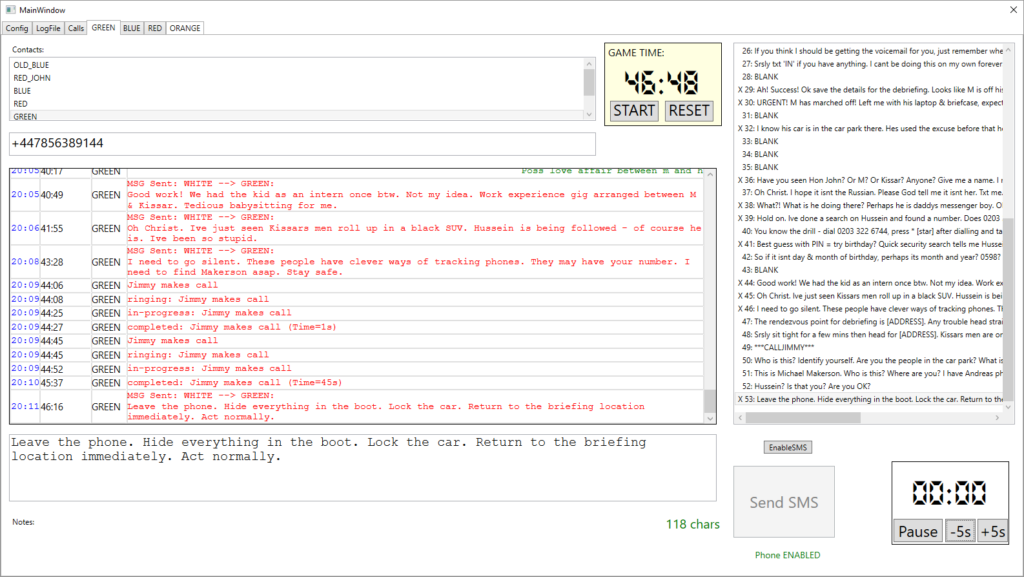Giving Fake Spies Real Phone Numbers
Time to read:
This post is part of Twilio’s archive and may contain outdated information. We’re always building something new, so be sure to check out our latest posts for the most up-to-date insights.


The plot seems familiar, like a story you absorb through osmosis after falling asleep with the news on. A politician is on the brink of passing a critical climate change bill, meeting the ire powerful energy corporations in the process.
The bit that seems like outright fantasy is your task — to make sure the bill passes while unearthing a secret that could jeopardize the bill. The moment your suspension of disbelief starts to wane, a phone in the glovebox starts ringing. It’s for you.
Yes, You’re Really Hacking a Fake Voicemail
You hack into a politician’s voicemail account. Right after you hang up, a text from a shadowy character demands your attention. The moment is either serendipitous or expertly programed. (Pssst…it’s the latter). But, whatever force delivered the message, the feeling is the same.
In reality, you should not hack your co-worker’s voicemail. But the game’s air of fantasy gives you the muster to hack various contact’s voicemails.
You’re looking for spy-game clues, not looking for the man behind the curtain. That man is John Sear.
Weaving Fantasy Into the Blanket of Reality
In A Moment Of Madness, elegant Twilio engineering rides on the back of a crafty narrative to blur the line between reality and fantasy. Sear is a veteran game designer, working with immersive theater companies to build productions that turn “reality into a blanket and a platform for the game.” Together with Katie Day of the theatre company The Other Way Works and writer Tim Wright, they built a game to get lost in.
John Sear uses various Twilio numbers and recordings of trained actors to build voicemail accounts. Critical contacts in the game all have voicemail accounts that players mine for information. While information itself is fake, the encounter is eerily real
The game’s “blanket of reality” turns a car in a car park into counter-espionage headquarters for you and your partner. You have to have a partner because, as John points out, “a single player experience was terrifying — calling strangers, being a spy on your own in a car park. When it’s two-player, it’s fun. You’re like ‘What’s our spy name again?’”
Trading In Your Real Name for Your Spy Name
When you’re playing A Moment Of Madness, you should forget you’re playing a game. Sear keeps players submerged in a fantasy by adding the tiny trappings of reality. If you’re coming up short on clues while thumbing through the dossier you found in your glove box, you can phone a friend (or fellow spy).
John tracks how players are advancing through the game by monitoring the litany of Twilio numbers powering the game’s texts, calls and voicemails. He built a C# app to display webhook data in realtime so map every moment along the player’s journey from when they first text “we’re in” when they get in the car, to when they finally crack a secret voicemail account.

When the spy-gaming us up, all the different groups meet back where they started and exchange intel. They have to make a final decision on what they’ll do with the information they’ve amassed. This is the part of the game John can’t control — the human part. In an otherwise carefully engineered system, this is a variable John doesn’t try to control with code. Whatever choice the group makes to determine the fate of the climate bill, the politician, and their spy career is their call — one they’re making in a world John built.
Related Posts
Related Resources
Twilio Docs
From APIs to SDKs to sample apps
API reference documentation, SDKs, helper libraries, quickstarts, and tutorials for your language and platform.
Resource Center
The latest ebooks, industry reports, and webinars
Learn from customer engagement experts to improve your own communication.
Ahoy
Twilio's developer community hub
Best practices, code samples, and inspiration to build communications and digital engagement experiences.


